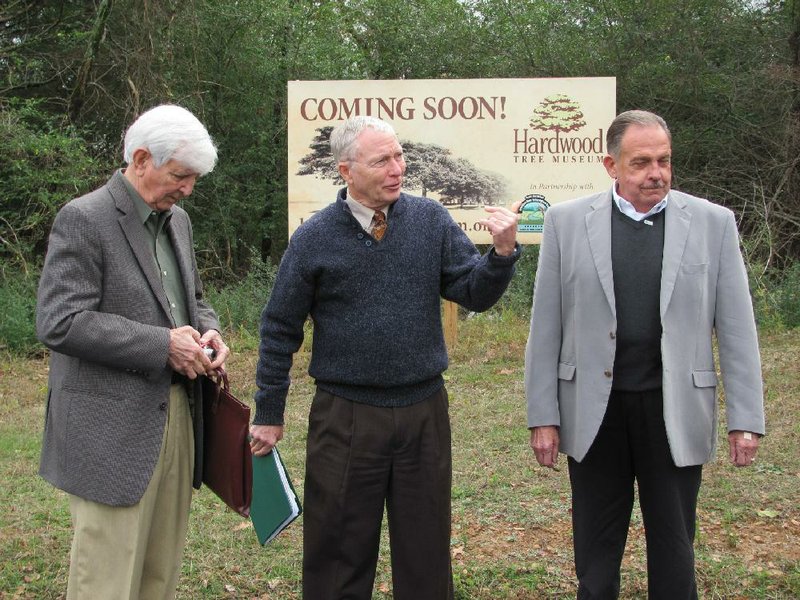FORT SMITH — About five years ago, while visiting his daughter in Japan, Bob Worley toured a silk museum where the exhibits opened with a mulberry tree, a web and a worm.
Eventually, that tour walked him past “everything silk, from hose to parachutes to $20,000 kimonos.”
“I decided then that if Japan could build a nice museum for a worm, when I got back to Fort Smith, we could build a nice museum for hardwood trees,” Worley said.
Now 87, Worley leads the Association of the Hardwood Tree, a Fort Smith nonprofit that announced last week it will build a museum on about 20 acres adjacent to the Janet Huckabee River Valley Nature Center at Chaffee Crossing.
The group wants to preserve the history of woodworking businesses in Fort Smith and across Arkansas.
Members want to honor the trees that were staples for companies that made baseball bats in Harrison, bows and arrows in Pine Bluff, and wooden goods of all description across the state.
Hardwood trees enabled Fort Smith during the last century to become a major manufacturer of furniturethat employed as many as 3,000 to 5,000 workers.
The group also hopes to educate the public about the value of oaks, maples, cottonwood, sweet gum and similar trees to the environment and the economy.
“The hardwood tree made millionaires in this town,” said Worley, a lawyer who headed the Fort Smith Freight Bureau and worked with many wood-processing industries to arrange their shipping.
For thousands of other people, “it put food on the table,” he said.
The group has spent at least two years planning the museum but made itsfirst public announcement on Tuesday. The nonprofit obtained its acreage through the Fort Chaffee Redevelopment Authority and the Arkansas Game and Fish Commission
When Chaffee Crossing Executive Director Ivy Owen got his first call to talk about land for a hardwood museum, he wondered if someone was playing a joke. But after he heard the plans,Owen helped arrange a land swap with the nature center, the redevelopment authority and the hardwood tree association.
Organizers believe it will be the only tree museum in the region. Tree exhibits make up living art projects in New York and a few other cities. Switzerland boasts the “world’s first tree museum,” which is outdoors. Canada also has outdoor tree museums.
Owen said he believes the museum “will be unique, something nobody else willhave.”
Though organizers have their land, they have yet to start fundraising for a museum building and landscaping and are in the early stages of planning what the facility would look like and cost. They didn’t release estimates.
“We’re just starting that planning. We’re kicking around ideas,” said University of Arkansas at Fort Smith history professor Billy Higgins, who spoke for the group at a news conference last week.
The association, which is all volunteer, hopes to complete the building in six to seven years. Organizers don’t want to compete with efforts under way now to raise $50 million to build a U.S. Marshals Museum in Fort Smith.
Meantime, the museum plans to focus on native trees and the history of the people and industries that worked in wood.
Trees that grow naturally in the area are primarily oaks but also include maples, cottonwood, sweetgum, hickory and even some walnut and cherry, said Bob Gillson, an association board member who was trained as a forester and worked for Riverside Furniture Corp., a large Fort Smith company.
Worley hopes the museum can plant lots of native trees, particularly rarer species.
He hopes the building will include interactive exhibits for children and hundreds of articles and photos he’s already collected about wood-related industries in Fort Smith and Arkansasdating from the Civil War.
The new museum, he hopes, will teach everyone “to appreciate this remarkable raw material and all it means to the planet.”
For more information, visit the association’s website hardwoodtreemuseum. org.
Northwest Arkansas, Pages 16 on 11/25/2011

